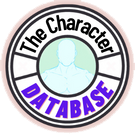Mathematics Manipulation
From The Character Database
Mathematics Manipulation is the ability to control and alter mathematical concepts and their applications.
Types:
- Abstract Manipulation of Mathematics: The ability to manipulate mathematics in its abstract form. This includes changing the way reasoning is performed, mathematical notation, inference rules, and the assumptions and models used in mathematics. However, the actual phenomena described by these mathematical concepts remain unaffected.
- Applied Manipulation of Mathematics: The ability to manipulate real phenomena by altering the mathematical rules that describe them.
Possible Uses:
- Physics Manipulation: Since most laws of physics are described by mathematical equations, changing these equations or their meanings can alter the described phenomena, assuming the changes are applied to reality and not just on paper.
- Quantity Manipulation: By manipulating mathematical concepts, the results of measuring quantities can be changed, effectively increasing or decreasing the amount of something.
- Operation Manipulation: Altering the way mathematical operations work can change real phenomena described by them. For example, if 1+1=3, adding one apple to another would result in three apples. This can also involve forcefully applying mathematical operations to reality, such as fusing two things by summing them.
- Dimensional Manipulation: Since dimensions are a mathematical concept, altering them can change the attributes of dimensions. For instance, changing a 5-dimensional object to 3 dimensions and vice versa.
- Logic Manipulation: Mathematics includes and extends logic. Altering mathematical concepts can affect underlying logical principles. For example, creating a mathematical contradiction could undermine the validity and usefulness of logic.
- Spatial Manipulation: Concepts like distance and spatial properties are part of mathematical studies. Changing the mathematics describing these concepts can affect the real properties of space.
- Manipulation of Form: The user can change the form, volume, area, and similar properties of objects, as these are mathematical properties.
- Probability Manipulation: Since probability is expressed as a mathematical value, the user can influence probability by altering this value.
Limitations:
- Users might only have access to certain parts of these abilities.
